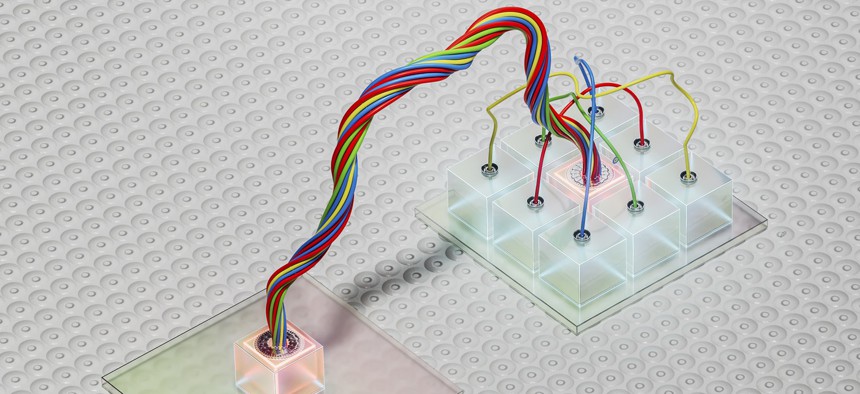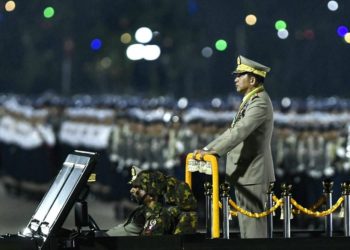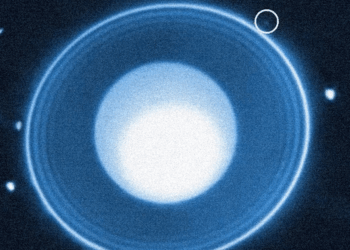
If the Pentagon is to harness the promise of quantum-powered devices, it needs ways to connect them to today’s data networks. But networking has been the “black sheep” of quantum research, says the leader of a DARPA program that’s attempting to bridge the gaps.
“On this program, the challenge is: How do we integrate quantum systems on our current communication infrastructure?” said Allyson O’Brien, whose QuANET program—it’s short for “quantum networks”—has been operating since March 2024. “What do they look like as sensors, as better timekeepers and as novel types of data carriers? What can we do with them that you would not be able to do with the traditional communications media we have now?”
O’Brien likens QuANET to the famed Advanced Research Projects Agency Network, from which the modern internet emerged. Her program aims to build upon this infrastructure to transmit quantum-generated information and use the inherently secure features of quantum communications to further safeguard U.S. secrets.
“Quantum systems are kind of the ‘what’s next,’ and the QuANET program is looking at how we increase privacy and security, integrity and resiliency, and [reduce] some of the complexity,” she said.
Not every quantum-powered technology is part of QuaNET’s integration agenda. O’Brien is concerned with the transmission of quantum-time synchronization and quantum sensing and metrology data into current networks.
“We are looking at … can we use quantum systems to do things better? And ‘better’ is relative,” O’Brien said.
One use case she is exploring is for quantum sensors to improve channel monitoring to ensure seamless communication between critical infrastructure, such as hospitals and financial institutions, as well as to strengthen security.
“One of the reasons that channel monitoring is so difficult is it requires external hardware, and a lot of the bandwidth that you would use for communications goes into sensing instead,” O’Brien said. “So one of the things we’re doing on QuANET is: ‘Can we integrate sensing with the communications?’”
Quantum computing, for now, is not a priority for QuANET.
“We are not looking at plugging into quantum computers,” she said. “In the future? Absolutely. [We’re] not preparing for quantum computers, although, okay, we do think one of the fundamentals that we’ll learn on this will absolutely help with that infrastructure.”
QuANET’s other chief deliverable is its hardware product, the qNIC, or quantum networking card. Traditional networking cards are designed to plug into devices and grant that device access to a larger network. The proposed qNIC will help standardize quantum information channels with their traditional node counterparts to effectively share quantum signals and information.
“By the end of the program, you could have a qNIC that you could plug into the laptop you’re using right now,” O’Brien said. “The purpose for that is that we don’t want a bunch of other equipment that people need to plug into their computers for it to do a function that it should already be able to do.”
In creating a viable qNIC that can be scaled, initially for government use, DARPA researchers will be looking into the best methods to improve error correction and bit rate times.
QuANET consists of three phases spanning 60 months, or five years. O’Brien said that they are in phase one now after qNIC design submissions. Phases two and three will look into the fiber infrastructure and over-air link extensions, respectively.
Network communications “is a difficult technology to talk about, but it’s so important, especially when it doesn’t work,” O’Brien said. “This is a huge divergence from the research that’s being done in quantum networking today. The whole point of QuANET is to bring a new type of research that’s much closer to the technology side, and looking at how to integrate this technology and make it usable.”
The post DARPA wants to hook tomorrow’s quantum gear into today’s networks appeared first on Defense One.




